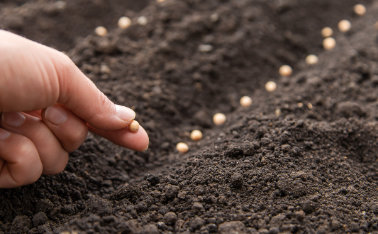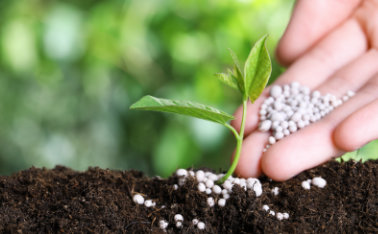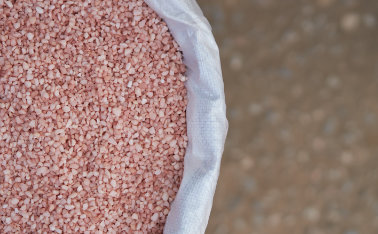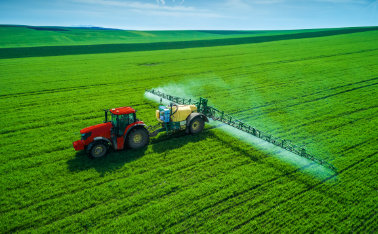What are phosphorus-potassium fertilizers? Leading producers
It is a group of fertilizers that combine both phosphorus and potassium into one granule. There are many methods of creation and raw materials used for production. There are several producers of complex fertilizers containing these two elements on the Polish market, such as Zakłady Chemiczne Police, Gdańskie Zakłady Nawozów Fosforowych, Luvena Luboń and Fosfan Szczecin. In addition, the market for compound fertilizers is so powerful that we can choose from a range of products from YARA and from the Eastern market, which supplies high-quality products, including phosphorus-potassium fertilizers.
How to properly feed plants with phosphorus-potassium fertilizers?
As with mono ingredients, you should remember about the basic parameters and the action of individual elements in the plant. Then you need to know the ratio in the fertilizers to know how much and what fertilizer we are looking for and what will be optimal for a given crop, type of soil, and the expected yield.
In the entire range of phosphorus-potassium fertilizers, we have those which, due to the method of creation and source of raw material (especially phosphorus), will have different rates of transformation in the soil and thus their availability to plants. For this reason, their prices will also vary significantly. It is good to reach for those from reliable suppliers and preferably directly from the manufacturer’s factories.
Fertilization scheme for individual sites with different phosphorus and potassium absorption
After finding a low content of available phosphorus or potassium, the dose should be increased by 30 kg P2O5 or K2O/ha, and with very low content – by 40 – 60 kg P2O5 or K2O/ha.
- At the site showing very high abundance, the component dose can be reduced by 30 – 40 kg P2O5 or K2O/ha, and with high content – by 20 kg P2O5 or K2O/ha.
- It is not recommended to fertilize with phosphorus when the content in the soil exceeds 40 mg P2O5 / 100 g.
- Give up potassium fertilization when its content in very light soils exceeds 35 mg K2O / 100 g, in light soils 40 mg K2O / 100 g, in medium soils 50 mg K2O / 100 g, in heavy soils 60 mg K2O / 100 g.
- On farms where by-products are collected from the field, the doses of phosphorus fertilizers should be increased by approx. 20%, and the doses of potassium fertilizers by 60 – 80%.
Potassium salts can be mixed with superphosphate ammonium phosphate, which allows the simultaneous application of fertilizers. Very good yield-forming results are obtained when using multi-component granulated fertilizers containing phosphorus, potassium and nitrogen, in the form of Nitrofoska (NPK Mg), Polifoska (PK, NPKMg), Polimag (NPK MgS) or Polidap (NP).
Today we also have fertilizers based only on P and K, of the PK type. However, most of them are supplemented with nitrogen as well as microelements.
What are multicomponent fertilizers?
Multicomponent fertilizers include those that contain more than one of the basic nutrients for plants, referred to as macroelements. Such a fertilizer may contain nitrogen (N) in its composition – it can be in various forms: ammonium, nitrate or amide, phosphorus (P) and potassium (K). Additionally, as a supplement, they may contain additional macronutrients, such as: magnesium (Mg), sulfur (S) or calcium (Ca). The content of nutritional micronutrients, such as boron (B), copper (Cu), iron (Fe), manganese (Mn), molybene (Mo) and zinc (Zn), is also possible.
Individual nutrients may be present in different proportions or not in the composition of a given fertilizer. Thanks to this, you can adjust the right power supply to the specific requirements of entire groups of plants, individual species as well as the seasons.
Classification of compound fertilizers
Multicomponent fertilizers can be divided into mixed and complex fertilizers. Mixed fertilizers are obtained during mechanical mixing of single fertilizers. We can also make them on our own. Complex fertilizers, on the other hand, are obtained by a chemical reaction of several chemical compounds containing plant nutrients.
Forms in which multi-component fertilizers occur:
- loose – it is quite difficult to distribute it evenly on the soil surface, but the effect of such fertilizer is faster than granules. The price is lower compared to the granular product from the same manufacturer;
- granulated – allows the fertilizer to be evenly distributed over the soil surface. It also has a slower action than loose form, which is its advantage as it gives a long-lasting effect. The fertilizer is not leached into the deeper layers of the soil, but is gradually absorbed by the plants as the granules dissolve. It also saves us some work, because we can spread more fertilizer at once without fear of over-fertilization. On the market, there are also granular fertilizers, the so-called long acting that are encapsulated. They last even longer. The price is higher than an identical loose product from the same manufacturer;
- liquid – convenient to use, intended mainly for foliar feeding – interventional.
It is advisable to mix both loose and granular form with the top layer of soil when the fertilizer has nitrogen content. This will prevent the loss of this macronutrient.
What to look for when choosing a compound fertilizer?
When choosing mineral multi-component fertilizers, pay attention to the so-called secondary components, namely sulfur and chloride content. These components are often intrinsic to one of the nutrients in the fertilizer. Some plants are sulfur-loving, so for them we should choose fertilizers containing sulfur, especially for plants with high requirements for this ingredient. For individual plants, it is also worth choosing:
- fertilizers with a relatively high content of chlorides – mainly for chloride-loving and neutral plants,
- fertilizers with reduced chloride content – best for plants partially tolerating chlorides and neutral, also suitable for chlorine-loving plants,
- chloride-free fertilizers – mainly for chlorine-sensitive and neutral plants.
Summary – advantages of multi-component fertilizers
The biggest advantage of multi-component mineral fertilizers is that you can adapt them to the requirements of the individual plants. Besides, they are convenient and practical to use, they can be used for pre-sowing and top dressing, they are much safer than single-component fertilizers. Always give individual doses of the preparation according to the manufacturer’s instructions, thanks to which you can be sure that their action will be effective.







